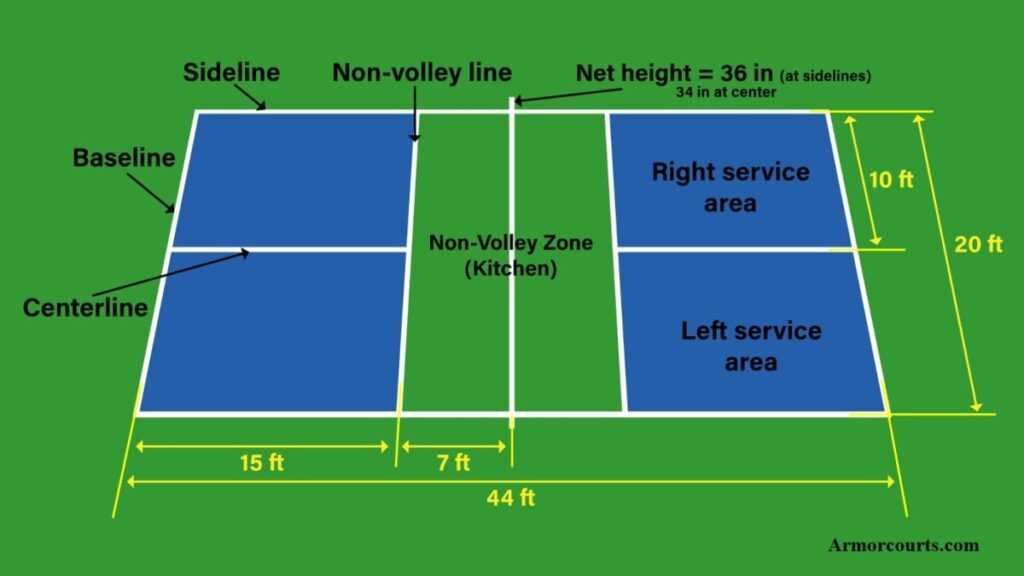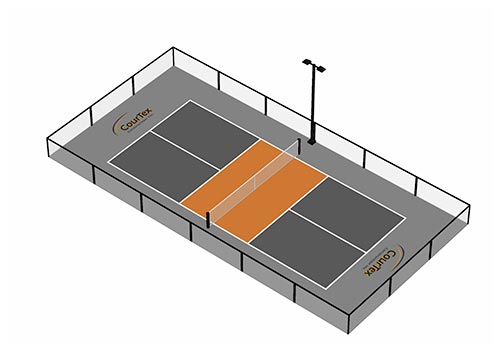Personalized Pickleball Court Construction for Residential and Commercial Spaces
Personalized Pickleball Court Construction for Residential and Commercial Spaces
Blog Article
Sustainable Practices in Pickleball Court Building You Must Know
As the popularity of pickleball continues to climb, so too does the demand for sustainable techniques in court building. The influence of these methods expands far past the court itself.
Choosing Eco-Friendly Materials
Picking environmentally friendly products is a vital step in the building and construction of sustainable pickleball courts. The choice of sustainable materials not just reduces environmental influence but likewise boosts the long life and efficiency of the court. Key products consist of recycled rubber for the surface, which uses excellent longevity and shock absorption while diverting waste from landfills.
Additionally, using locally sourced materials minimizes transport exhausts and sustains local economic situations. Pickleball court construction. Making use of indigenous hardwoods for fencing and seating can supply a lasting visual while ensuring durability against the components.
Including absorptive products for court foundations can further add to sustainability by enabling natural water drain and minimizing overflow. These choices not only secure local environments but also advertise healthier play settings.
Efficient Water Drainage Solutions
While the selection of environmentally friendly products is crucial, carrying out efficient water drainage services is just as vital for maintaining sustainable pickleball courts. Appropriate drainage not only secures the court surface from water damages yet also lessens disintegration and runoff, advertising ecological integrity.
Efficient drain systems can consist of absorptive paving, which enables water to penetrate the ground as opposed to merging externally. This decreases the chance of standing water, which can result in mold and mildew and various other upkeep concerns. In addition, incorporating strategically positioned water drainage networks and swales can direct excess water away from the court area, guaranteeing a dry having fun surface area and stopping soil erosion.
Utilizing indigenous plant life in the landscape design around the courts can additionally improve drainage by soaking up excess water and minimizing overflow. These plants require much less irrigation and promote biodiversity, aligning with sustainable techniques.
Additionally, it is vital to consistently maintain the water drainage system to guarantee its long-term performance. This consists of cleaning particles and tracking for clogs. By focusing on effective drainage options, pickleball court manufacturers can dramatically contribute to the sustainability and long life of the facility, eventually profiting both players and the setting.
Energy-Efficient Lighting Options
As the need for pickleball remains to grow, incorporating energy-efficient lighting choices right into court design has actually become significantly crucial for sustainability. Conventional lighting systems often take in too much energy, adding to greater operational costs and environmental effect. Embracing contemporary, energy-efficient innovations is necessary for both brand-new constructions and restorations.
LED (Light Emitting Diode) lighting stands apart as a top selection due to its longevity and power financial savings (Pickleball court construction). Contrasted to standard lights, LEDs use roughly 75% much less energy and can last up to 25 times much longer, dramatically lowering upkeep costs. The directional nature my latest blog post of LED lights minimizes light link air pollution, making sure that illumination is concentrated on the court instead than surrounding locations.

Lasting Surface Area Alternatives
Exploring lasting surface area alternatives for pickleball courts has obtained traction amongst gamers and builders alike. The emphasis on green materials not only straightens with the growing environmental understanding but likewise improves the efficiency and resilience of the courts.
This product gives exceptional shock absorption, minimizing the danger of injuries for players while advertising sustainability. These ceramic tiles are simple to change and mount, and their adaptability enables for various court setups.
All-natural turf courts are additionally becoming a lasting choice, promoting biodiversity and decreasing the warmth island effect. They require routine maintenance and water, which may not line up with all sustainability objectives.

Water Conservation Strategies

Another effective technique entails the setup of rain harvesting systems. These systems collect and save rainwater for use in keeping court surfaces and landscape design. This approach not just conserves drinkable water yet also lowers reliance on metropolitan resources.
Furthermore, using drought-resistant landscape design around the courts is important. Indigenous plants call for much less water and are better adapted to local climate conditions, hence decreasing general water intake. In addition, utilizing effective watering systems, such as drip irrigation, makes sure that water is supplied straight to plant origins, minimizing evaporation and waste.
Verdict
Incorporating sustainable practices in pickleball court construction substantially adds to ecological conservation and source performance. Making use of eco-friendly materials, executing reliable water drainage remedies, and embracing energy-efficient illumination choices can significantly reduce ecological influence. Furthermore, discovering lasting surface alternatives and using water preservation techniques improve the general sustainability of these recreational centers - Pickleball court construction. By prioritizing these practices, the building and construction of pickleball courts can align with more comprehensive environmental objectives while promoting long life and performance within neighborhoods.
As the popularity of pickleball continues to increase, so also does the need for sustainable practices in court building.Picking eco-friendly products is an important step in the building and construction of lasting pickleball courts. By focusing on energy-efficient lights options, pickleball court contractors can contribute to a much more sustainable future while meeting the needs of players and stakeholders alike.Incorporating sustainable surface area alternatives not just improves the efficiency of pickleball courts however additionally leads the means for carrying out efficient water conservation techniques.Including sustainable practices in pickleball court building and construction substantially adds to environmental conservation and source effectiveness.
Report this page